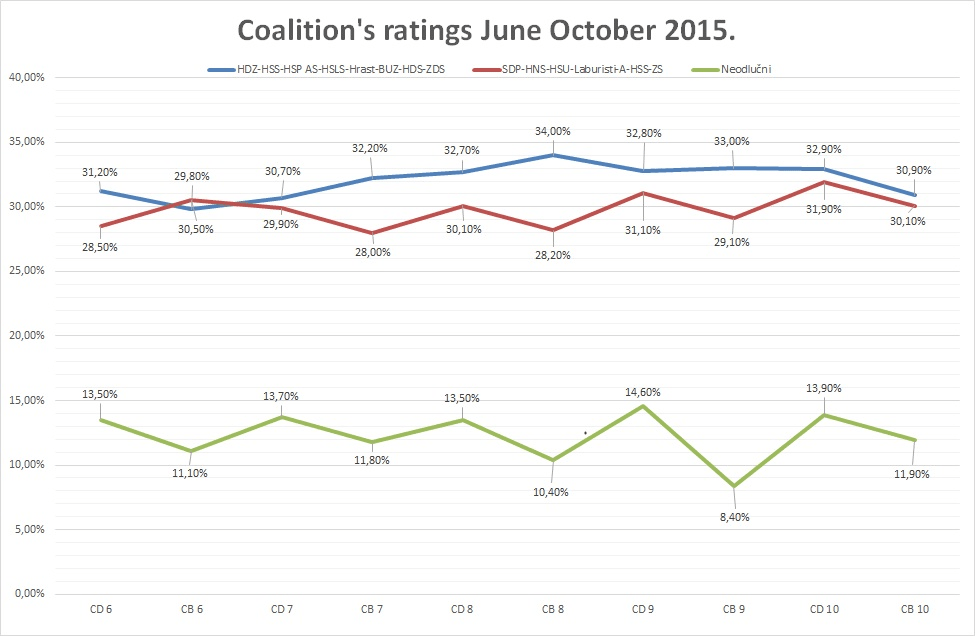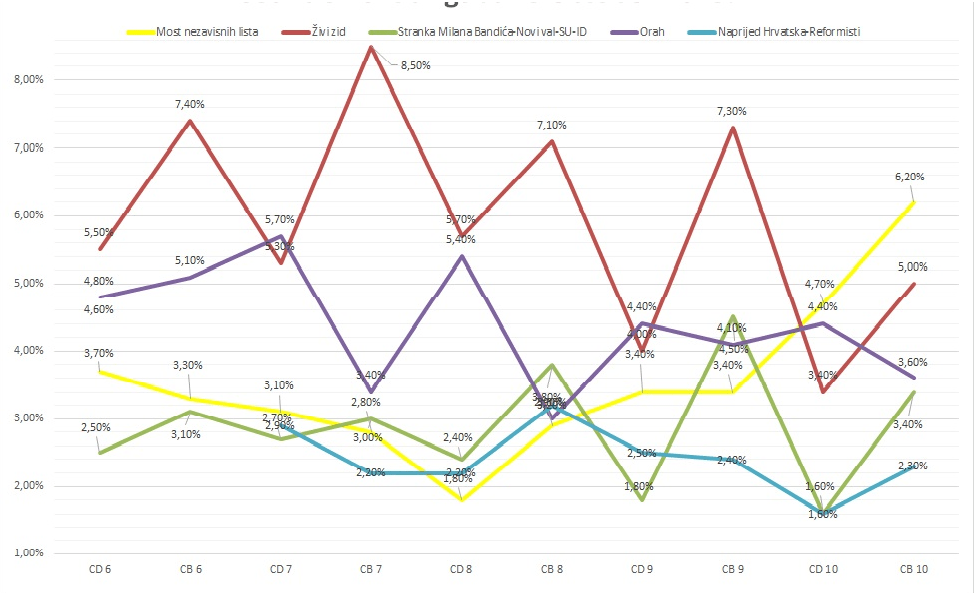Last poll before the elections, conducted just days before the start of the official campaign
With just 9 days left of the election campaign in Croatia, it seems the difference between two leading coalitions has almost completely disappeared. Last poll conducted by Ipsos Puls just days before the start of the official campaign (which was very sparsely covered by the media), shows some very interesting trends in terms of who is increasing their support and who is stagnating or going through a downward spiral. We must note that this poll, like most other polls in Croatia, has been conducted as if Croatia was one single electoral district, meaning it cannot show the standings in each electoral district, and it does not include Diaspora votes but it can give an overview of general opinions.
When it comes to the direct standing of Hrvatska raste (SDP and partners) and Domovinska koalicija (HDZ and partners), SDP is showing a continuous growth in the last two months while HDZ has been losing support for two months in a row. Hrvatska raste is now supported by 30,1% of the surveyed voters while Domoljubna Koalicija is pulling in 30,9% of the votes meaning that they are still in the lead (by 0,8%) but considering that their support last month was 33%, their downward trend is continuing.

Above: Main coalitions results from June until October
CD= CroDemoscop results by Promocija Plus telephone poll CB= CroBarometar results by Ipsos Puls, field poll
If we have a look at the meteoric rise of the third option – MOST, who are now supported by 6,2% of voters compared to only 2,5% a month before, one can come to a conclusion that the former HDZ member Drago Prgomet is attracting some of HDZ’s supporters, weakening the position of the largest opposition party. Other smaller parties that were comfortably above the election threshold few months ago are now just under it (Živi zid is showing a decrease from 14,6 in February to 4,9 in October, ORaH falling from 17,5 in November 2014 to 3,1 in October 2015). One other trend that has crystallised from the latest poll is the increase of indecisive voters. From 9% in August, their percentage has now risen to 12%, meaning that parties still have few days to try and win their vote considering that almost 25% of votes are formed during the election campaign.

Above: Poll results for other parties closest to election threshold
Government approval rates are also rising, from 17% in December 2014 to current 34,3%, as is the average grade from 1,92 back in December 2014 to 2,33 now in October (continuous monthly growth, helped greatly by the handling of refugee crisis, along with other elements). When it comes to the average grade given to the Croatian President Kolinda Grabar Kitarović, it is also visible that her support is falling for the third month in a row now and it is now the lowest it’s been since she was elected (from 3,28 recorded back in August to 3,15 in September and current 2,97 in October).
In conclusion, we are seeing some interesting trends, however it will all come down to the actual election day when votes from all electoral districts start coming in. This year, as it was reported by the State Electoral Commission, we will have to wait two hours longer for the first exit polls adding even more suspense to already tight elections.


